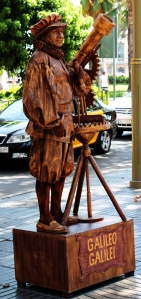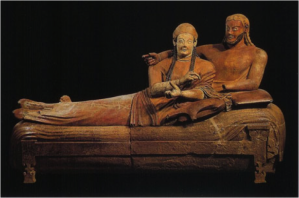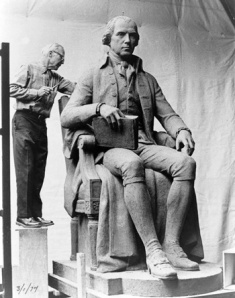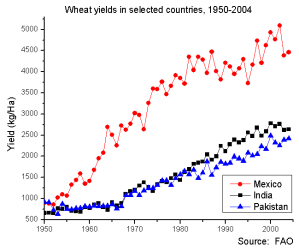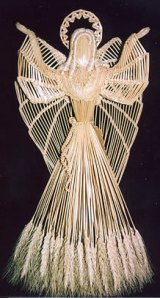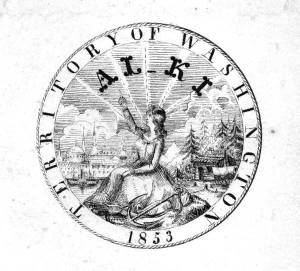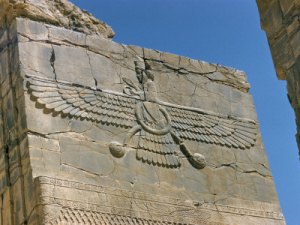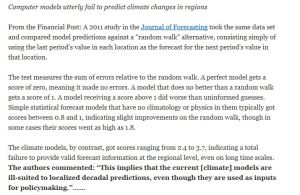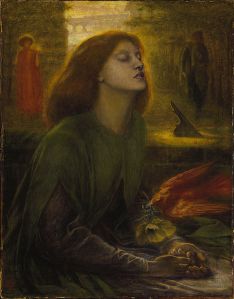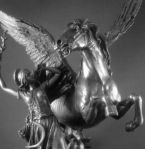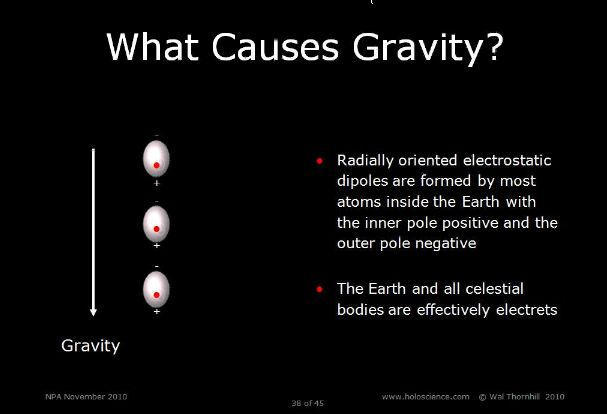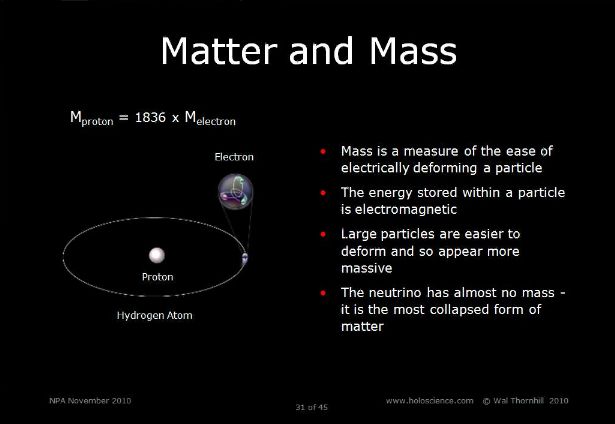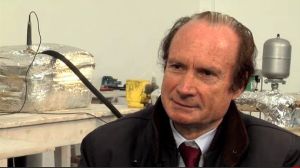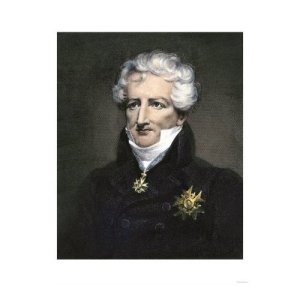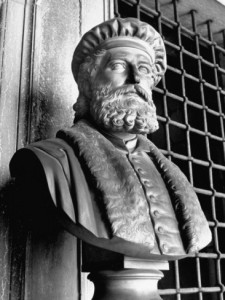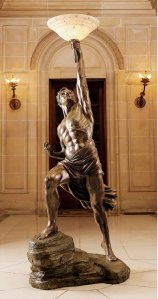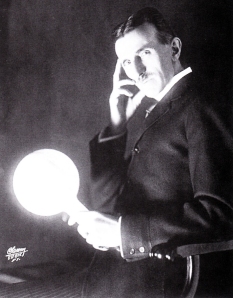Light dances on the highly polished heavy wooden door as a man in a tie emerges into the spring air. He descends the broad steps, still shaded from the sun’s rays by eight enormous columns, and pauses to look at his watch. He is a Senator, elected by the voters in his state two years ago. On the face of his elegant watch, one hand indicates IX and the other IV. Stepping into the hustle of the sidewalk, his eyes adjusted, he hardly seems to notice the carefully tended gardens beginning to bloom around him and moves efficiently to his next appointment. It is Saturday, March 23.
Our Greek and Roman heritage flows indelibly like a current through our daily lives from its headwaters in the ancient world. Today our calendar, numerals, architecture, forms of government, titles, astronomy, sculpture and symbolism all embody to some degree, or borrow, what belonged to these ancient societies. Much of our understanding of our history, and therefore of ourselves and nature, come from early Greek and Roman sources.
But what if, through the accidental abundance of Roman documents and edifices, this actually only provides a singular and quite distorted view of the cultures and eras before Greece and Rome? What if Classical culture was a continuation of the ancient world – but an inferior, lesser progression from previous people and cultures of the Aegean and Asian world? If we assume this is the case we can begin to ask new questions, and perhaps even push our way past the Classical wall between us and antiquity, and discover what has been hidden or obscured by unquestioning over-reliance on those particular witnesses.
It also allows us to question whether Greece was the cradle of modern civilization in its democratic form, or if in reality, Greek and Roman culture and philosophy actually casts one of the deepest and darkest shadows over the world, to this day. And we can observe whether, to the extent that we step out of these long shadows, we experience accelerated and unexpected creative and scientific advancement in all spheres of life.
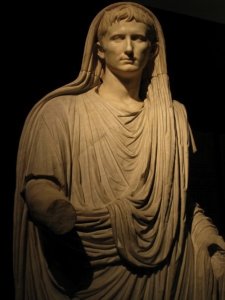
The Pontifex Maximus was the title of the high priest of the Roman State cult. This title and office is the same held by the Pope.
Four Considerations
1. The Persistence of Rome
To generally mark out and confirm the persistence of Roman government over the West, even after the supposed fall of Rome itself, I present these candid observations:
Christianity did not adopt pagan culture, but rather Rome adopted Christianity and continued its main offices, language, and philosophy from the city of Rome. It enforced the use of Latin in all manuscripts and learning; it maintained the scientific and political teachings of Aristotle and Plato as the authoritative educational standard for centuries, until the European Renaissance; and the office of Pontifix Maximus, High Priest of the Roman State religion, was continued in both title and functions through the Pope. This would explain why one may see an underlying continuity of Roman gods and goddesses in European art and churches.
3. Plato’s Long Shadow
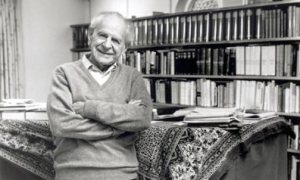 As Karl Popper has exhaustively demonstrated in his book, The Open Society and Its Enemies: The Spell of Plato, the political philosophy of Plato possesses the earliest roots and full explanations of totalitarian and collectivist systems, and of the original misanthropic view of man as a slave by nature, who is only fit to be bred and ruled by a ruling class. (It may not be any accident or coincidence that the Club of Rome bears the name of that Iron Empire.) These philosophies persist to this day in almost the exact form and details Plato gave them in his writings 23 centuries ago.
As Karl Popper has exhaustively demonstrated in his book, The Open Society and Its Enemies: The Spell of Plato, the political philosophy of Plato possesses the earliest roots and full explanations of totalitarian and collectivist systems, and of the original misanthropic view of man as a slave by nature, who is only fit to be bred and ruled by a ruling class. (It may not be any accident or coincidence that the Club of Rome bears the name of that Iron Empire.) These philosophies persist to this day in almost the exact form and details Plato gave them in his writings 23 centuries ago.
2. The Tendency to Verify the Known
To very briefly introduce the problem of the over-confidence of scholars in Classical sources to interpret the ancient world, I present examples of several civilizations whose mythologies have no written record or textual narrative, yet as a whole are interpreted as reflections of Greek mythologies, and in popular documentaries, the Minoans are approached almost entirely in the context of passages from Plato’s writing:

Back of the epingle en or. Decipherment and translation, by Dr. Aartun, of the Linear A inscription on the gold pin possibly reads as follows: a-ma-wa-si . ka-ni-ya-mi . i-ya . za-ki . se-nu-ti . a-ta-de
Translation: ”Devote yourself to the true friend who returns to you the good, who is free from hostile thoughts” (lit. “clean from hate”). Source: http://jarnaes.wordpress.com/1-minoan-crete-linear-a/
Ancient cultures preceding and contemporaneous with Greek/Roman civilization, such as the Minoans, Mycenaeans, and Etruscans, are interpreted through what is known in Greek histories, and their gods are automatically equated with Classical gods. This is the case, despite the fact that their texts remain undeciphered – or even undiscovered; they are thus not allowed to speak for themselves.
In fact, there is no shortage of examples which show that because of their own biases, the Greeks and Romans were sometimes quite unable to understand or accurately interpret cultures that were very likely in many respects their betters. And so these Classical reports can be false, idealized, or even slanderous.
As for city-states with elected governments, it is known that Etruria was unable to unify its own cities in the face of foreign invasion. Whether they had experimented in voting or not is a matter of speculation; but the Etruscans did not have a strong central government, preferring to exist as independent, prosperous provinces.
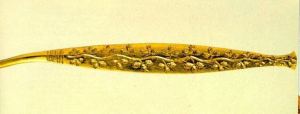
Beautiful Minoan epingle en or
4. Other Possible Questions About Our Past
 It would be wonderful to keep in mind, when holding up our small candle to look far back into the deep past of the Earth and its people, that there are many languages that remain untranslated, to this day. These include those of the Aegean cultures already mentioned, and also the writing of the Indus Valley people, besides others. Also, in some cases an ancient language may have been successfully translated, but the majority of tablets remain unavailable because of modern-day socio-political tensions – such as is the case in Ebla.
It would be wonderful to keep in mind, when holding up our small candle to look far back into the deep past of the Earth and its people, that there are many languages that remain untranslated, to this day. These include those of the Aegean cultures already mentioned, and also the writing of the Indus Valley people, besides others. Also, in some cases an ancient language may have been successfully translated, but the majority of tablets remain unavailable because of modern-day socio-political tensions – such as is the case in Ebla.
These ancient peoples’ character and relationships, manner of daily living, quality of life, writing or lack of it, are all still awaiting revelation. What was the founding genius and spiritual principles they built their original cultures upon, as preserved in their legends? What was the manner of the decline and fall from the original genius of the people, and what finally caused their cities to become abandoned?
What advanced cultures may have existed without leaving megalithic monuments or any trace upon the Earth? Is it possible that the physical preservation of great stone cities skews our view of the past toward highly centralized societies, and leaves the cultures that did not favor massive building projects unrepresented in our history?
Are there lost cities on the continental shelves, beneath the sea, which push human history even further back in time? These questions and others may help us begin to identify distortions and knowledge gaps, and to acknowledge the possibility of some of the lack or limitations in our present understanding of the ancient world. An excellent starting point for new discovery would be to set aside the powerful temptation to refer only to what is known through Greek and Roman sources, even ignoring them for a time, in order to study the unique character and genius of these unknown people on a case by case basis.
~P. West, 2013
 I am just returned from one of my long absences, having been at my other home for five weeks past. Having more leisure there than here for reading, I amused myself with reading seriously Plato’s republic. I am wrong however in calling it amusement, for it was the heaviest task-work I ever went through. I had occasionally before taken up some of his other works, but scarcely ever had patience to go through a whole dialogue. While wading thro’ the whimsies, the puerilities, & unintelligible jargon of this work, I laid it down often to ask myself how it could have been that the world should have so long consented to give reputation to such nonsense as this? How the soi-disant Christian world indeed should have done it, is a piece of historical curiosity. But how could the Roman good sense do it? and particularly how could Cicero bestow such eulogies on Plato? Altho’ Cicero did not wield the dense logic of Demosthenes, yet he was able, learned, laborious, practised in the business of the world, & honest. He could not be the dupe of mere style, of which he was himself the first master in the world.
I am just returned from one of my long absences, having been at my other home for five weeks past. Having more leisure there than here for reading, I amused myself with reading seriously Plato’s republic. I am wrong however in calling it amusement, for it was the heaviest task-work I ever went through. I had occasionally before taken up some of his other works, but scarcely ever had patience to go through a whole dialogue. While wading thro’ the whimsies, the puerilities, & unintelligible jargon of this work, I laid it down often to ask myself how it could have been that the world should have so long consented to give reputation to such nonsense as this? How the soi-disant Christian world indeed should have done it, is a piece of historical curiosity. But how could the Roman good sense do it? and particularly how could Cicero bestow such eulogies on Plato? Altho’ Cicero did not wield the dense logic of Demosthenes, yet he was able, learned, laborious, practised in the business of the world, & honest. He could not be the dupe of mere style, of which he was himself the first master in the world.